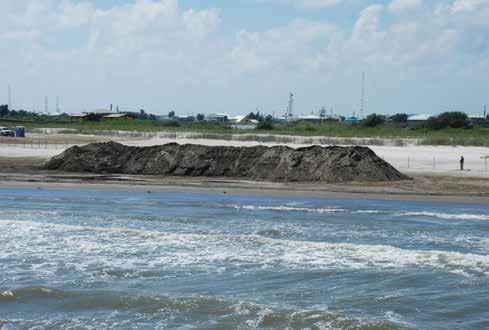
2 minute read
Watershed = Flows + Tipping Points
from Way Beyond Bigness
The
[WBB] questions why a watershed’s principle definition is “an area or ridge of land that separates waters flowing to different rivers, basins, or seas.”3 The scientist-geographer John Wesley Powell contextualized watersheds further, with his ubiquitously referenced view:
That area of land, a bounded hydrological system, within which all living things are inextricably linked by their common water course and where, as humans settled, simple logic demanded that they became part of a community.4
Powell emphasizes a watershed’s potential to prioritize a community’s interaction— and I would add manipulation—within the hydrological boundary of a certain scaled watershed. In other words, what Shafiqul Islam and Lawrence E. Susskind, in Water Diplomacy: A Negotiated Approach to Managing Complex Water Networks, interpret as the coupling of the natural and societal domains.5 But for designers, what skill sets can we contribute to better enable a watershed’s integration within the realities of the built environment, many of which do not obey the logic of hydrological boundaries? And by extension, how can a better appreciation for watersheds make us better designers? These realities include the need for designers to engage contested issues such as architecture, infrastructure, landscape, urbanism, regimes of control, societies, politics, community advocacy, and climatic and/or geopolitical influences, all of which may reside within or outside of a watershed. The alternate, and possibly just as important definition for a watershed, is “an event or period marking a turning point in a situation in a course of action or state of affairs.”6 A definition not about water per se, but rather one having to do with major jolts, or minor glitches, in what seem to be ordinary states of affairs. Think major jolts like a hurricane, or minor glitches like a tweet. Either have consequence, be they positive or negative, visible or invisible, immediate or distant, fact or fiction, and they can be what
Malcolm Gladwell refers to as a “tipping point … that magic moment when an idea, trend, or social behavior crosses a threshold, tips, and spreads like wildfire.”7
[WBB] questions why architecture’s principle definition is the “practice of designing and constructing buildings.”8 Although this disciplinary strength remains the priority for most architects, it also reinforces the discipline potentially operating in a silo, and dangerously out of touch. Maybe a more pertinent question is: what really constitutes a “building”?
The National Council of Architectural Registration Boards (NCARB) elaborates on what licensed architects are responsible for:
Licensed professionals trained in the art and science of the design and construction of buildings and structures that primarily provide shelter. An architect will create the overall aesthetic and look of buildings and structures, but the design of a building involves far more than its appearance. Buildings also must be functional, safe, and economical and must suit the specific needs of the people who use them. Most importantly, they must be built with the public’s health, safety and welfare in mind.9



